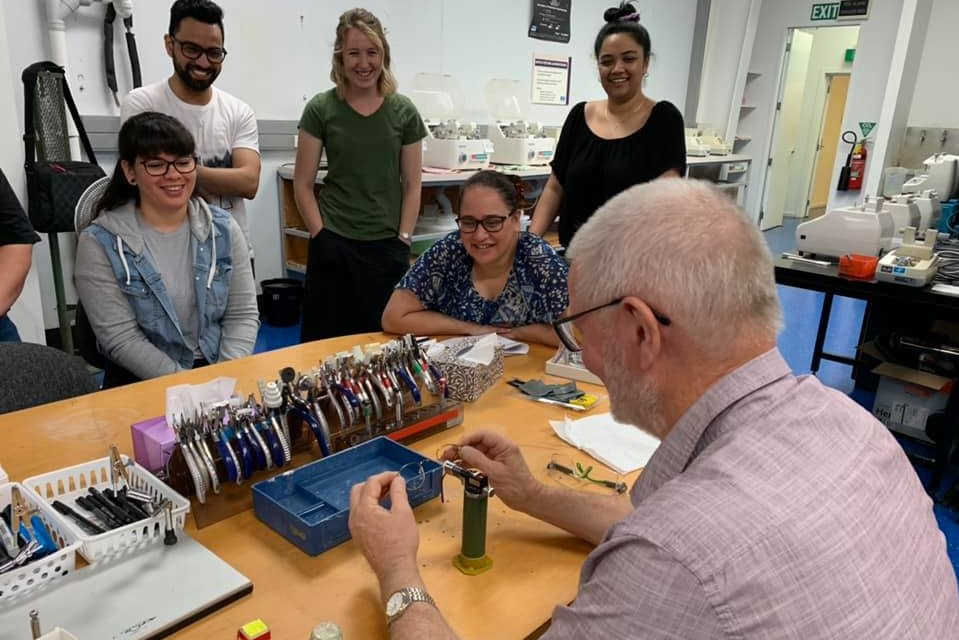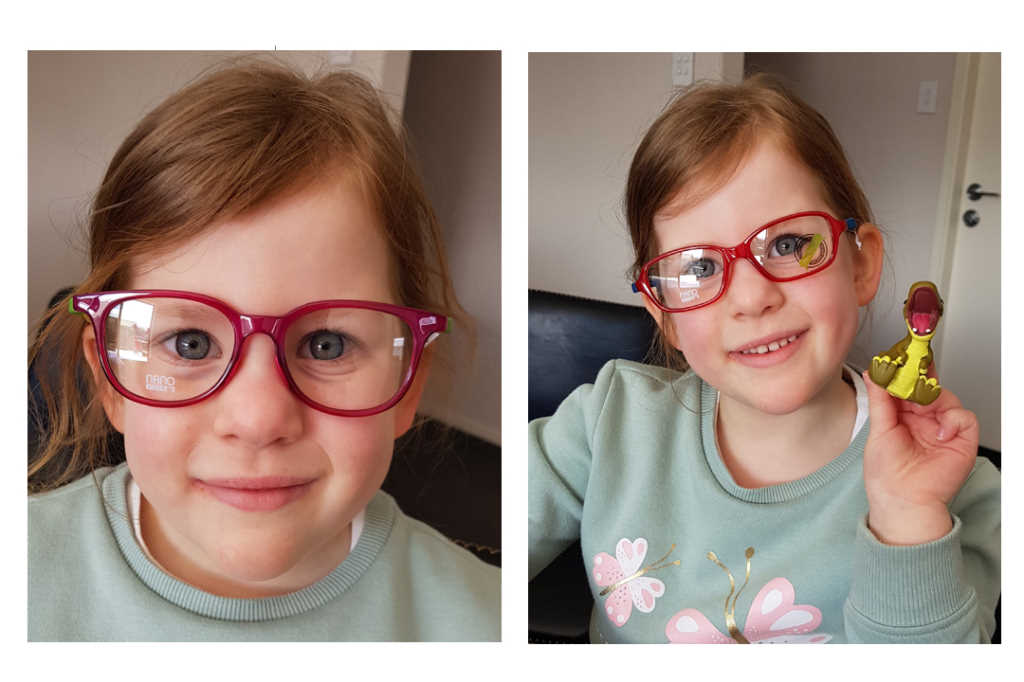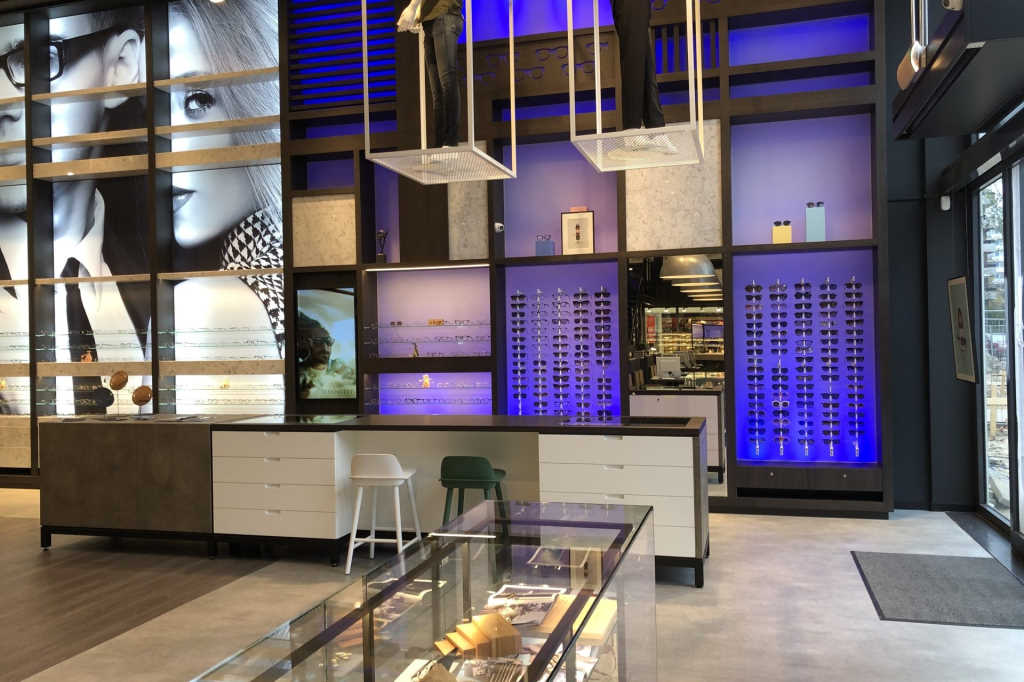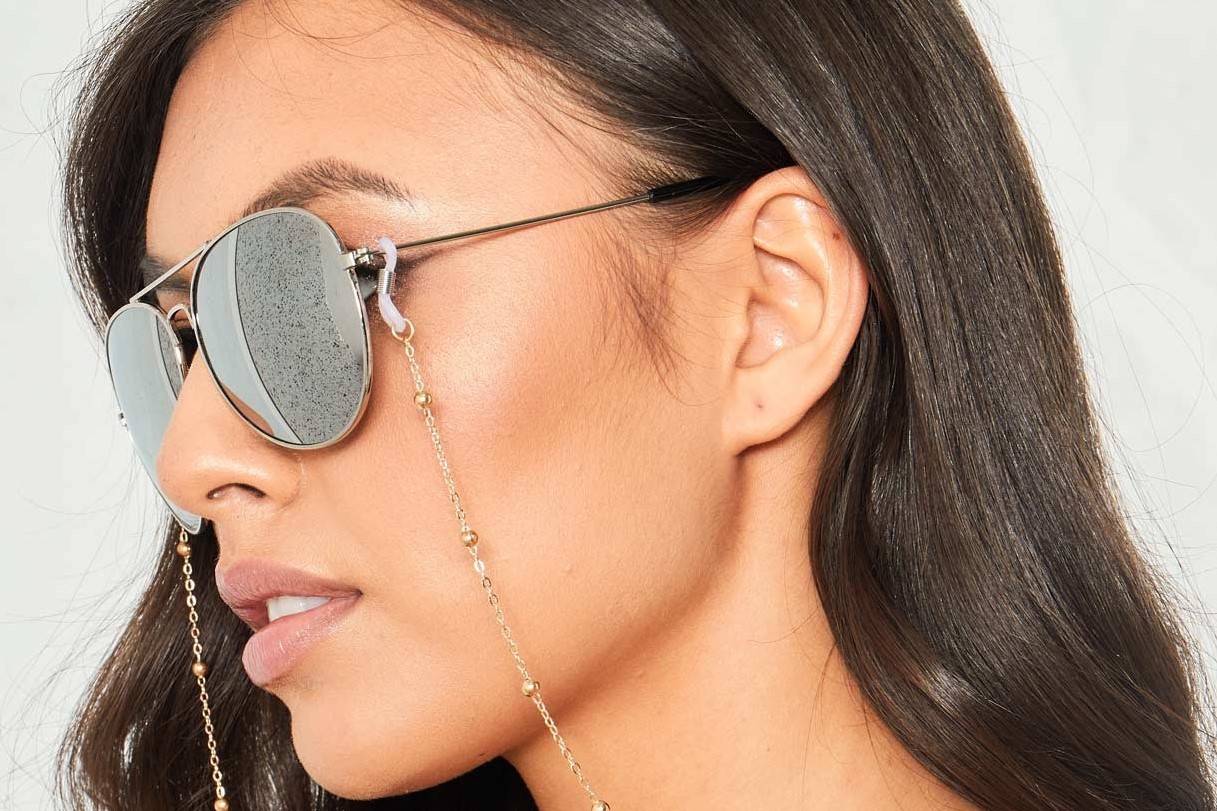Lenses: thinking outside the frame
Being a keen hobbyist, I came across a situation that required some work to be completed above my head. I needed to connect and install 12-volt electrical connections and wiring under a 1.1m high table, requiring me to work at a close range to fit the small wiring to connectors. But my everyday progressives are not that effective; not ‘fit for purpose’. Trying to tilt back far enough to use the near portion of my lenses in this sort of situation is nigh on impossible, making these tasks difficult and time consuming to achieve. So, I resorted to turning my progressive spectacles upside down. While there is an immediate benefit, they tend to fall off and become uncomfortable to wear after a very short while, so not really that practical for the task required.
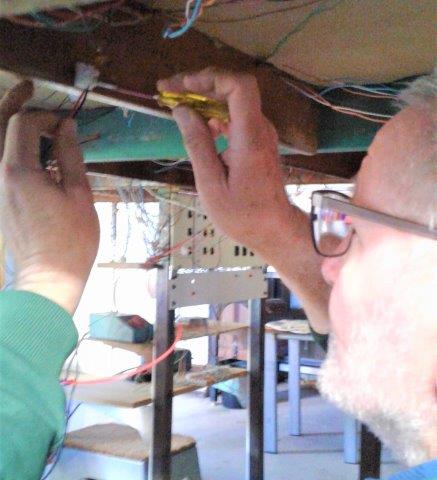

To accommodate my particular needs, I remembered ‘occupational lenses’. These provide optics that allow near/close work to be achieved above the horizontal working line of view, so above the head, while providing distance and near optics all in one lens. This led me to fit a pair of multifocal, flat-top bifocals upside down into a frame with my near power at the top. Instant success! They allowed me to work comfortably on tasks above my head and became my ‘second pair’ in my hobby room.
In optical dispensing training, students learn to glaze lenses into frames that would be considered ‘general’ or ‘normal’ wear, ie. single-vision, progressive and multifocal lenses, and included in this array of jobs is a pair of multifocal flat-top bifocals fitted upside down into a frame. Students are always quizzical about this. But we need to think outside the square sometimes, particularly when it comes to recommending a second pair of spectacles to satisfy a customer’s particular optical needs.
Considering what’s ‘normal’ or ‘occupational’
So, what is an ‘occupational’ lens? The answer is, it’s not clear. According to Wilson & Daras¹, “The distinction between what may be considered ‘regular’ or general-purpose bifocals and trifocals and those that are thought of as occupational is not clear.”
If a broader view of the term ‘occupation’ was taken, it would include lens forms that provide clear vision above the horizontal line of view while providing the benefits of general or normal wear lenses.
Dispensers are very familiar with the ‘normal’ range of lenses satisfying the majority of their customers’ optical needs, and there would be no argument that the progressive lens form has become the go-to general or normal-wear lens form. There is an excellent amount of information explaining the different lens forms most suitable for particular ‘working distances’, whether that be for reading, studying, driving, cooking, mending or working at a computer, with most suppliers boasting seamless vision between distance and near or intermediate to near. Even single-vision lens forms are sometimes included here as nowadays these are often supplied with a near potion included to reduce fatigue for close work.
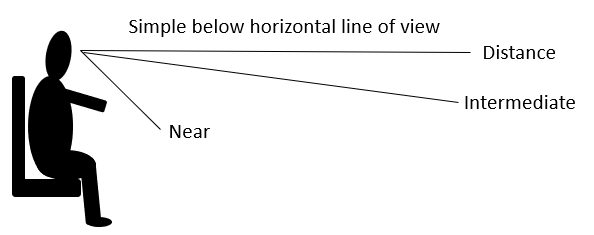
With today’s modern lenses, wearers are assessed as either a head or eye mover, or a bit of both, and appropriate lenses are dispensed. The wearer is instructed on how best to wear their new lenses for the best vision and to reduce neck and shoulder discomfort, while maintaining correct posture. This is all very good information and well demonstrated during the dispensing process.
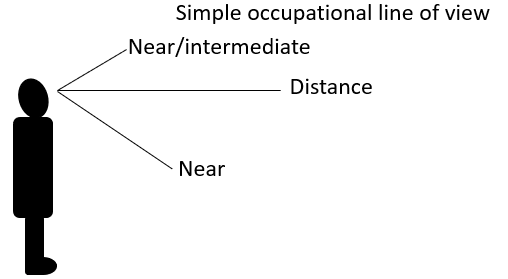
However, if these instructions were adopted by a general or normal lens wearer who seeks to work at close range above their head at a shelf, for example, they would have their head bent back as far as possible, neck stretched to look through the near portion of their lens, as I was, resulting in unwanted neck and shoulder pain. The optical industry has alternative lenses that accommodate different occupational needs, so understanding your patients’ needs is key to being able to solve this problem, and will also increase sales.
Occupational, that second pair
This need-based ‘second pair’ of spectacles often falls under the term ‘occupational lenses’, and rightly so! They are for occupations that require the best optics usually while working and/or sitting with a line of view below the horizontal.
Customers should be advised that this second pair is not for general wear but prescribed for their particular task/occupation or optical needs. It would be impracticable to wear anti-fatigue lenses whilst working in the kitchen or washing the car, or lenses designed for working at the computer when out shopping.
As theory and practice effectively demonstrates, there is always a need for a second pair of spectacles other than the primary pair: progressive lenses with the second pair of lenses for reading or computer work, for example. Thus, the recommended second pair could also be for occupations requiring clear vision above the horizontal where general or normal-wear progressive forms, or the current ‘occupational’ lens forms, are not effective.
A small group of customers may require a little more from a second pair of spectacles. These will come from some field of industry, occupation, interest or hobby that requires the best optics for their occupational needs. Recognising these needs through effective and skillful questioning is a vital part of the dispensing process. Current questioning techniques and training are well documented and adequately support today’s occupational lenses. However, some changes may be needed to include alternative lens forms for above the horizontal line of view optical needs. It’s good to discuss this within a practice to discover if there might be a need to extend current questioning levels and product knowledge, and to address optical needs beyond ‘defined’ occupational lenses. For more detail about the alternative lens forms for occupations working above the horizontal, I refer you to Practical Optical Dispensing¹ and Practical Optical Workshop².
The benefits of occupational designs, providing above horizontal line of view, are obvious. They provide better optics at heights dictated by the occupation; ensure the wearer maintains good posture to eliminate stress and tiredness; enable the wearer to perform tasks effectively; and they maintain workplace ergonomics for efficient use. That said, there will be some disadvantages that will need to be discussed with your patient, such as more head movement due to segment size, making them unsuitable for general wear, image jump and other issues normally associated with multifocal lenses.
A bit of history
Occupational lenses were produced (fused glass) in the form of flat-top bifocals. The top addition was either for near or intermediate distances, the bottom mainly for close work, with the distance portion in between the two segments. Other designs accommodated for intermediate vision by incorporating a trifocal segment at the bottom, called a quadrifocal design.

The gaps between segments were specified by the dispenser and produced accordingly, usually 12mm to 15mm gaps. Segment sizes were either 25mm, 28mm or 35mm. A range of CR-39 occupational lenses were then made available to replace glass lens usage. They provided the benefits of glass but in a lighter material that could be tinted to cater for even more occupational demands.
Today’s ‘outside the square’ options
Today there are occupational lenses identified as DD Occupational flat top 28mm, which come in CR-39 with a 28mm segment. The gap is standard at 14mm. The additions available come as near addition (top) or 60% of near addition (top) with a near addition at the bottom (Younger Optics³). Occupational lens forms are also available in glass (as special customer orders), clear plastic, Trivex and Transitions grey, with segments with diameter 28mm and 35mm (X-Cel⁴).
Another lens form, Ardis Special Trifocal, has segments at the top and bottom with different additions depending on the occupational need. These are either distance at the top, intermediate in the middle and near at the bottom; intermediate at the top, distance in the middle and near at the bottom; or near at the top, distance in the middle and near at the bottom, with glass lenses 1.500 index⁵.
While there is some limited literature regarding using ‘free form’ manufacturing techniques to produce progressive forms ‘upside down’, this appears to be limited to overseas. There are also independent manufacturers and lens suppliers who will manufacture special lenses to suit those occupational needs for above the horizontal line of view, so it might pay to do a little more investigating if there is a customer need to do so.
References:
- Wilson, D & Daras, S, 2006. Practical Optical Dispensing, 3rd ed
- Wilson, D, Stenersen, S & Daras, S, 2007. Practical Optical Workshop, 2nd ed
- YoungerOptics, 2018. Boutique Lenses
- X-Cel, 2019. Lens Availability 2019
- Patrick, A. 2011. Take a New Look at New Lenses


Bruce Wain is an optical mechanic who has worked in the optical industry for more than 50 years. He has extensive experience in all aspects of optical technology and workshop skills and has taught these topics many times to many dispensing students.









